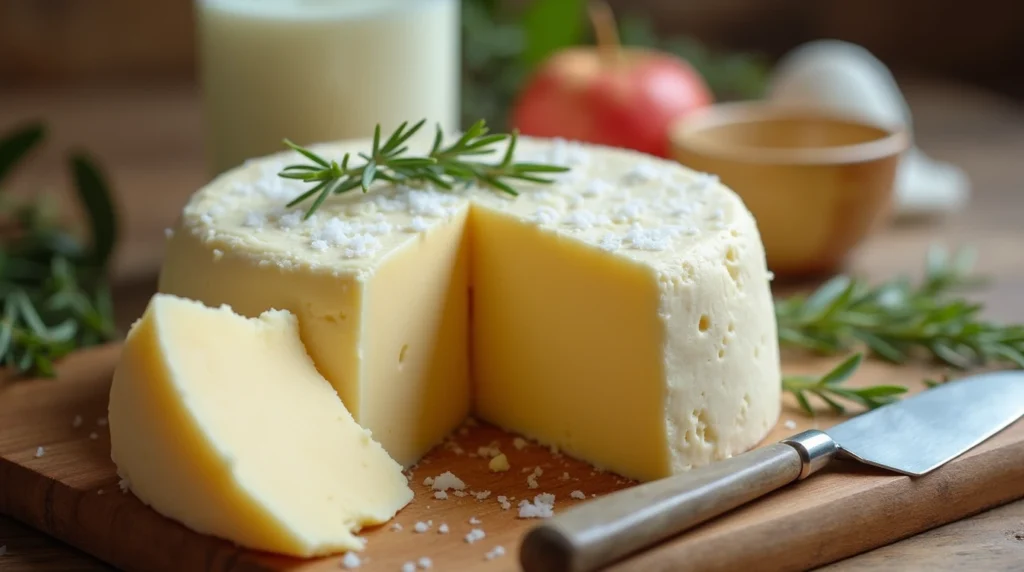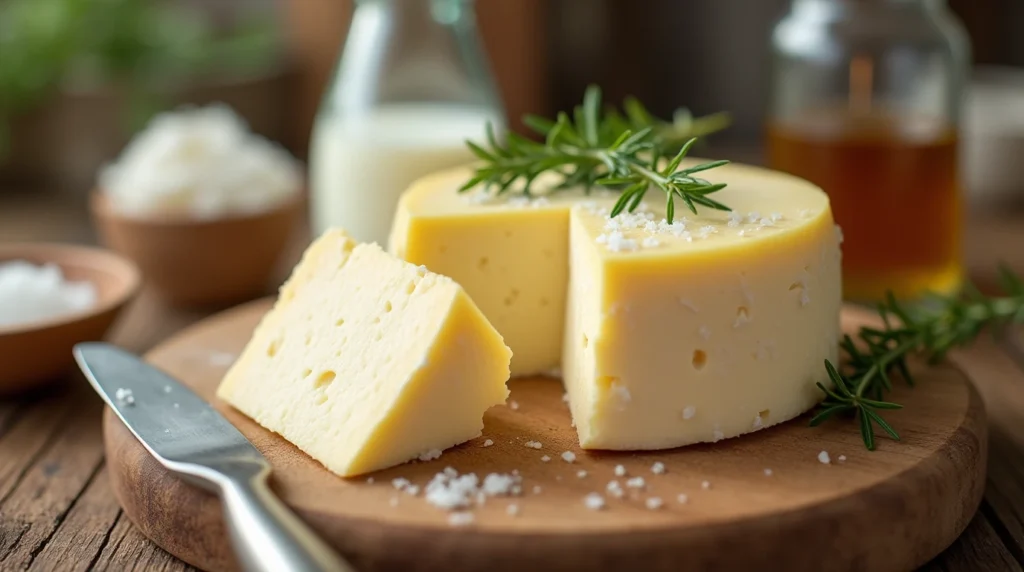Don’t Buy Cheese

Homemade cheese is a simple yet delicious way to enjoy fresh, natural dairy without preservatives or artificial additives. This cheese recipe requires only four basic ingredients—milk, apple cider vinegar, butter, and salt—making it an easy and accessible option for anyone looking to try cheese-making at home. The process involves curdling the milk with vinegar, separating the curds from the whey, and then enhancing the texture with butter to create a creamy and spreadable cheese.
One of the best things about making cheese at home is that you can control the flavor and texture. By adjusting the amount of salt and butter, you can make it creamier, firmer, or even more flavorful by adding herbs, garlic, or black pepper. This cheese is perfect for spreading on toast, using in sandwiches, or even incorporating into salads and pasta dishes.

Homemade cheese is also a healthier option compared to store-bought varieties. It contains fewer additives and preservatives, and you can choose high-quality milk for a richer and more nutritious final product. Plus, making cheese at home is a fun and rewarding experience, giving you full control over the ingredients and the process.
This particular Homemade Cheese yields approximately 300-350g of fresh cheese, perfect for serving a small family or a group of friends. It requires only 10 minutes of preparation and 15 minutes of cooking, making it a quick and easy way to enjoy fresh, homemade dairy. Whether you’re a beginner in the kitchen or an experienced cook, this Homemade Cheese is sure to impress with its simplicity and delightful taste.
📌 Number of Servings:
Makes approximately 300-350g (10-12 oz) of cheese Serves 4-6 people
⏳ Preparation Time:
10 minutes
🔥 Cooking Time:
15 minutes
🥢 Ingredients :
✅ 1.5 liters of milk (6 1/3 cups)
✅ Salt, to taste
✅ 2 tablespoons apple cider vinegar (30 ml)
✅ 50 grams melted butter (1/4 cup)
👨🍳 Instructions :
✅ Heat the Milk
- Pour 1.5 liters of milk into a heavy-bottomed pot.
- Heat over medium heat, stirring occasionally to prevent burning.
- Bring it to a light simmer (about 85-90°C or 185-195°F), but do not boil.
✅ Add the Vinegar
- Reduce the heat to low.
- Add 2 tablespoons of apple cider vinegar slowly while stirring.
- You will see the milk curdling and separating into curds and whey.
✅ Strain the Curds
- Line a strainer or colander with cheesecloth or a clean kitchen towel.
- Pour the mixture through the cloth to separate the curds from the whey.
- Let it drain for 5-10 minutes.
✅ Add Butter & Salt
- Transfer the curds to a mixing bowl.
- Add 50 grams of melted butter and salt to taste.
- Mix well until you get a smooth, creamy texture.
✅ Shape & Chill
- Place the cheese in a mold or shape it into a ball using the cloth.
- Refrigerate for 1-2 hours to firm up.
✅Serve & Enjoy!
- Use it as a spread, in sandwiches, or as a topping for dishes.
💡 TIPS :
✅ Use whole milk for a richer and creamier texture.
✅ If you want firmer cheese, let it drain longer and press it with a weight.
✅ You can substitute white vinegar or lemon juice for apple cider vinegar.
✅ Add herbs or garlic for extra flavor.
📊 Nutrition Information (Per 50g Serving)
| Nutrient | Amount |
|---|---|
| Calories | 120 kcal |
| Total Fat | 10g |
| Saturated Fat | 6g |
| Cholesterol | 30mg |
| Sodium | 150mg |
| Total Carbs | 1g |
| Dietary Fiber | 0g |
| Sugars | 1g |
| Protein | 6g |
❓ FAQ :
1. Can I use low-fat or skim milk instead of whole milk?
Yes, but the cheese will be less creamy and may yield a lower amount. Whole milk is best for a richer texture.
2. How long does homemade cheese last?
Homemade cheese can be stored in the refrigerator for 4-5 days in an airtight container.
3. Can I use lemon juice instead of apple cider vinegar?
Yes! Lemon juice works as a substitute, but it may give a slightly tangy flavor to the cheese.
4. Why didn’t my milk curdle properly?
This can happen if the milk is not hot enough (should be around 185-195°F or 85-90°C) or if ultra-pasteurized milk was used, which doesn’t curdle well.
5. Can I make this Homemade Cheese without butter?
Yes, but butter adds richness and improves the texture. Without butter, the cheese will be drier and more crumbly.
6. What can I do with the leftover whey?
Whey is packed with protein! You can use it in smoothies, soups, bread-making, or even to water plants.
7. Can I add flavors to my homemade cheese?
Absolutely! Try adding garlic, black pepper, chili flakes, or fresh herbs like thyme or basil for extra flavor.
8. Can I freeze homemade cheese?
It’s not recommended, as freezing can change the texture, making it grainy. Fresh consumption is best.
9. How can I make firmer cheese?
To make firmer cheese, drain the curds longer and press them under a heavy object for 1-2 hours before refrigerating.
10. Can I use plant-based milk to make cheese?
Some plant-based milks (like almond or soy) may work with modifications, but they don’t contain the same proteins as dairy milk, making the process trickier.
Related

